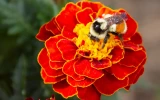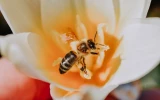The 11 Best Flowers for Honey Production (and 5 to Avoid)
Bees are essential for the survival of life here on our planet. Roughly one-third of our food supply and crops rely on bees for pollination. Foraging for nectar from flowers to turn into honey is the main job of bees. To make that job easy for them, beekeepers should continue to supply them with the best flowers that will help in honey production.
The best flowers for honey production are asters, lavender, goldenrod, cosmos, clover, mint, sage, coneflowers, catmint, sunflowers, and zinnias. These flowers are preferred because they contain generous amounts of nectar and pollen. The plants to avoid supplying the bees are Azaleas, Rhododendrons, Locoweed, Laurel, and California buckeye.
These bee-friendly plants can aid bees in producing more honey, which you can then extract and store. Certain plants can even alter the flavor of honey. Remember to plant a variety of species with overlapping bloom times, flower shapes, and plant heights to ensure that bees have food all year.
Summary
- Bees rely on flowers for food, so it is necessary for us humans to keep on planting the best flowers for honey production.
- Flowers with purple and blue colors are more attractive to bees because of their shorter wavelengths, meaning those flowers are the most nectar-rich in their eyes.
- Honeybees have this waggle dance they use to communicate with other workers to signal they have found a good pollen or nectar source. This is why one bee on a flower patch in your garden can attract many more bees.
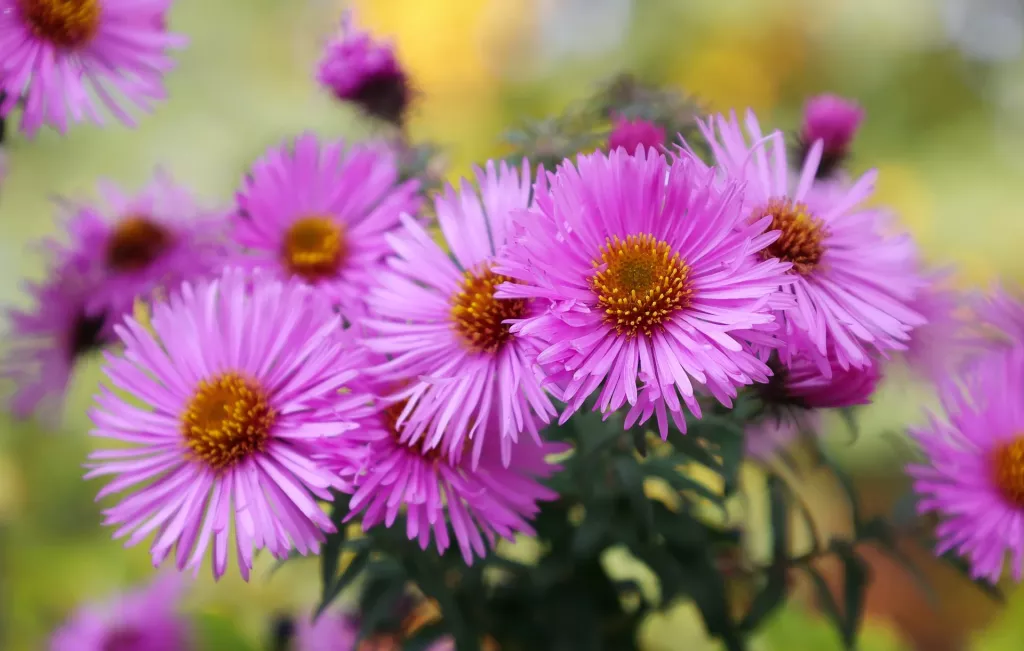
On this page:
What Flowers Make the Most Honey?
Bees are attracted to nectar-rich flowers that can help with their production of honey. Flowers like asters, lavender, goldenrod, mint, coneflowers, and others featured in this article are the most recommended plants by experienced beekeepers.
Notice some of these plants have colors that dominate purple. This is because bees are more drawn to purple, blue, white, and yellow due to shorter wavelengths, like UV light. On the other hand, bees cannot see red because the wavelengths are too long.
Among the many varieties of blooming plants, some are well-known for providing nectar. Most bee gardens contain members of the following plant families.
- Fabaceae (clovers, honey locust, redbud, soybea)
- Lamiaceae (mints, bee balm, sage, thyme, lavender, salvia, lemon balm, basil)
- Brassicaceae (canola, broccoli, turnips)
- Asteraceae (coneflowers, cosmos, zinnias, sunflowers, dandelion)
- Rosaceae (crab apples, blackberry, peaches, apples)
- Boraginaceae (borage, tansy)
Asters
Asters, or Symphyotrichum, are good for honeybees in the fall. These small, daisy-like flowers burst into bloom late in the summer and sometimes into November. They produce blue, pink, and purple daisy-like flowers that provide a rich source of autumn pollen and nectar for bees to help them survive the harsh, pollenless winter season.
Bees have a preference for flowers based on their tongue length. Some bees have short tongues that can access nectar from flowers like sunflowers, asters, and daisies. Those with long tongues get nectar from tubular-shaped blossoms like honeysuckle, and columbine.
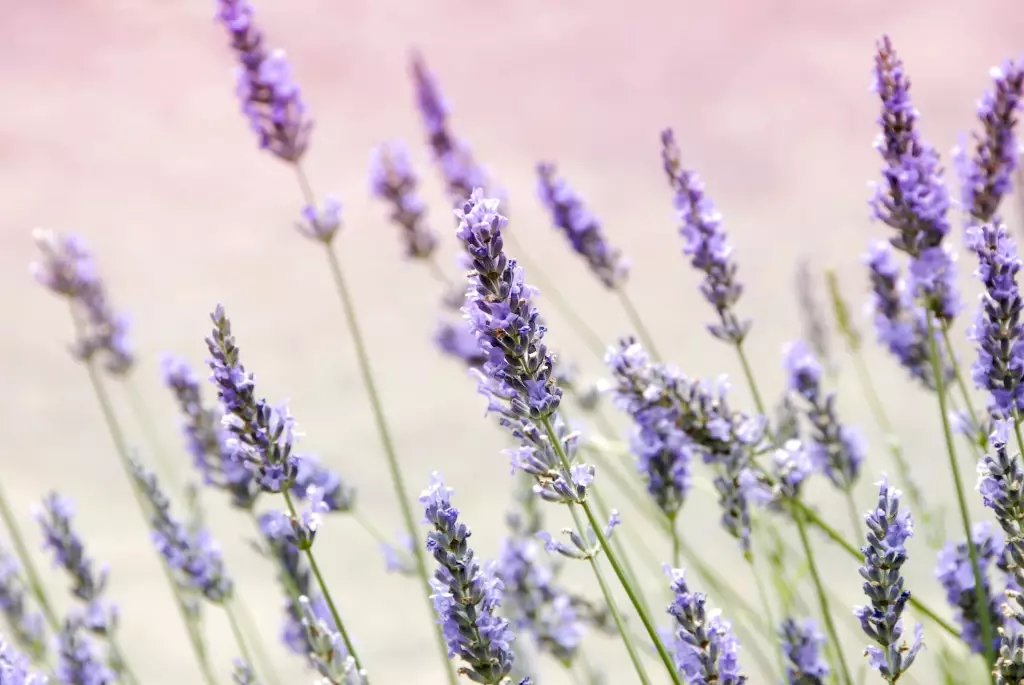
Bees also focus on one type of plant at a time and then move to another species of plant that has nectar ready for bees to harvest. If you don’t see bees on your asters, wait a while; they’re most likely not yet done working on that particular plant.
Lavender
Lavender is among the most popular plants most attractive to bees because of its strong scent and color. This herb is rich in nectar, which the bees harvest for honey production. It is an aromatic perennial herb that blooms all summer.
When lavender is in bloom, it attracts bees like a magnet, so you should consider planting some for your colonies. Lavender likes the heat, so make sure to plant it in full sun in sandy soil.
Lavender honey is a premium and delectable honey, usually with an extra light amber color. Its taste has a bright flavor, medium sweetness, and both woodsy and citrusy notes.
Goldenrod
Goldenrod, a bright yellow plant and a member of the genus Solidago, is an excellent source of fall nectar and pollen for bees. It blooms from July to September, making it a primary winter food source for bees.
Goldenrod honey is typically dark, thick, doesn't have the sweet smell, and quick to granulate. But it is full of minerals and protein. Beekeepers report honey gains of 50 to 80 pounds per colony when bees feed on this flower.
Cosmos
Cosmos have bright, daisy-like flowers that can bloom for months, making them a good source of food for bees. These flowers will attract more bees if you plant them in a large group rather than scattered. Planting them this way will also make it easy for bees to collect pollen.
Clover
White clover has a high pollen and nectar content that is beneficial to bees. White clover and crimson clover have short florets that make their nectar easily accessible to bees. They are a great addition to your garden to maximize food diversity for bees.
Clover honey is high in antioxidants that help regulate our blood pressure and protect our heart health. It has a thick, mildly sweet syrup and is white to amber in color.
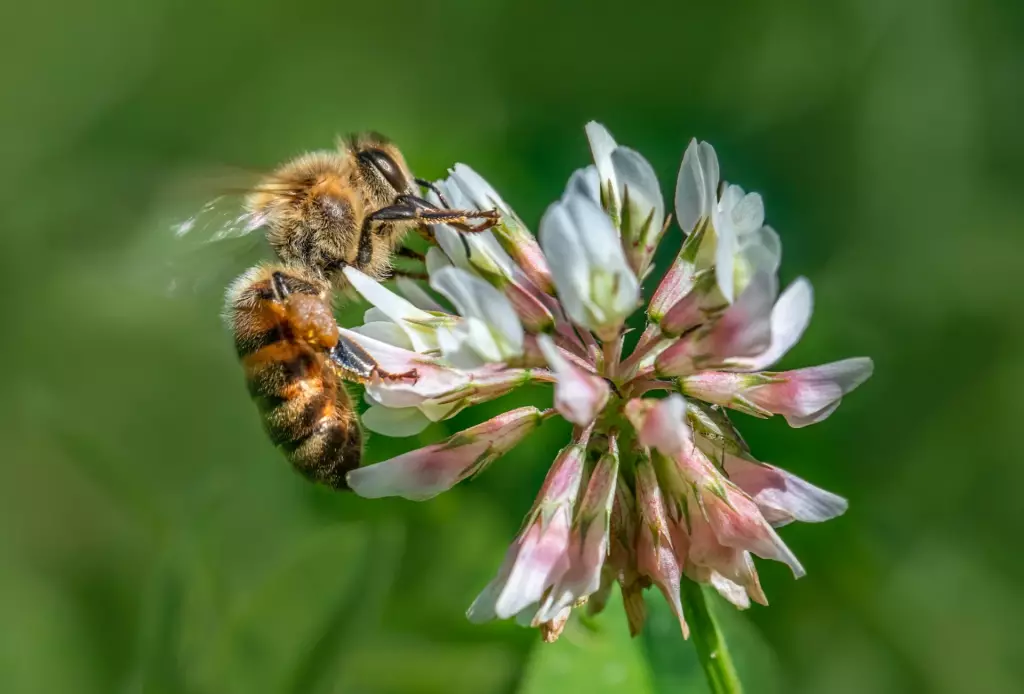
Mint
Mint is another herb that’s popular with bees. It’s a great source of nectar and pollen for bees. It is very easy to grow, but make sure to plant it in a pot or any other container so it doesn’t invade other plants in your garden. Mint honey is usually a reddish amber color.
Mint is not only good for honey production but also great for human consumption as an added ingredient in main dishes and desserts.
Plant this throughout your garden and let some of it bloom. They will lure pollinators to your other plants.
Sage
Sage, or Salvia, is an herb, just like mint and lavender, that has an aromatic scent that is attractive to bees. This plant is a good nectar source for bees. It has beautiful sky blue, bluish lavender, or deep indigo flowers that are very easy to grow.
Sage honey has an amber color and a flavor that is exceptionally rich but pleasant. It tastes like the desert; imagine the aromas of pine, juniper, and range land. This honey is considered premium honey because of its low moisture content and slow crystallization rate.
Coneflower
Coneflowers, or Echinacea, come in a variety of colors and species that bloom at different times, making them an ideal food option for your bees’ foraging grounds. Pale purple coneflowers have a short blooming period of three weeks during June and July.
The longer-lasting purple coneflowers bloom from summer into early fall, from July to October. The late bloom is beneficial for bees as they prepare their hives for winter. Coneflowers have daisy-like blooms that are perfect for attracting bees and butterflies. They’re also a perfect addition to your garden. They can adapt to many types of soils.
Catmint
Catmint has small but numerous blooms that attract bees and other pollinators and make them flock in droves. Catmint, or Nepeta, has aromatic foliage and is abundant in purple flowers. This plant grows so quickly, and it’s a good alternative to lavender.
You can shear the plants by deadheading or removing spent flowers if they bloom more than you want. This will keep your plants attractive and also encourage them to bloom more frequently.
Sunflowers
Sunflowers, or Helianthus annuus, are rich in nectar and pollen, and they have a bright yellow and orange color that attracts bees. The nectar from sunflowers can give you a light, yellow-white honey. Sunflower heads, when opened, reveal a circular disc that contains smaller flowers that are packed with tiny pollen and nectar. Also, the broad, semi-flat petals of sunflowers are an easy resting place for bees.
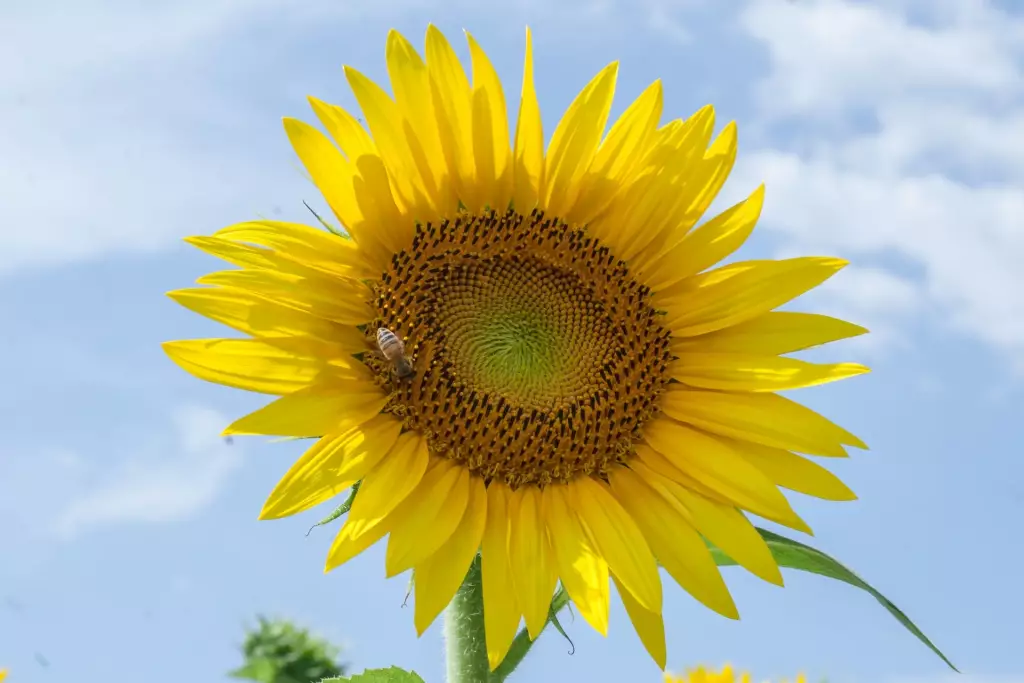
Lemon Queen is the most common type of sunflower that is particularly attractive to bees. Start planting sunflowers after the last frost and keep them irrigated during the summer. These flowers also look great in your garden and will also attract certain bird species. A field of sunflowers is just a sight to see.
Zinnias
Zinnias are another nectar-rich plant that is beneficial to bees because they bloom for an extended period of time, providing nectar to pollinators when other flowers are unavailable. These plants have a lot of small flowers, which means more pollen for bees to feed on. Zinnias are easy to care for and require little maintenance. They also grow quickly in a span of two months.
These multicolored flowers also add a big pop to your summer garden. They are late bloomers that can produce flowers of almost any color.
5 Plants To Avoid For Honey Production
Bees will source their food wherever they can, so it is your job as a beekeeper to keep supplying them with the best flowers and to avoid planting these five types of plants.
- Azaleas
- Rhododendrons
- Locoweed
- Laurel
- California buckeye
These are said to be toxic for bees. They may look great in your garden, but they are not beneficial to bees and other pollinators.
Also, avoid planting double-flowering varieties that have extra petals because they make it difficult for bees to access the nectar and pollen. An example would be marigolds, which is among one of the flowers bees like the least. Stick to the original flower form, and the bees will thank you by giving you more honey.
The Flower That Makes The Sweetest Honey
According to a study carried out by Dr. Jonathan White for the USDA in 1962, based on a comparison of 30 honey varieties all over the USA, European locust honey that's made from black locust flowers was found to be the sweetest, with a sweetness score of 120.64.
It was followed by common locust honey, which received a score of 120.26. The least sweet one among the 30 was the Honeydew Metcalfa from Europe, which got a 107.81 score.
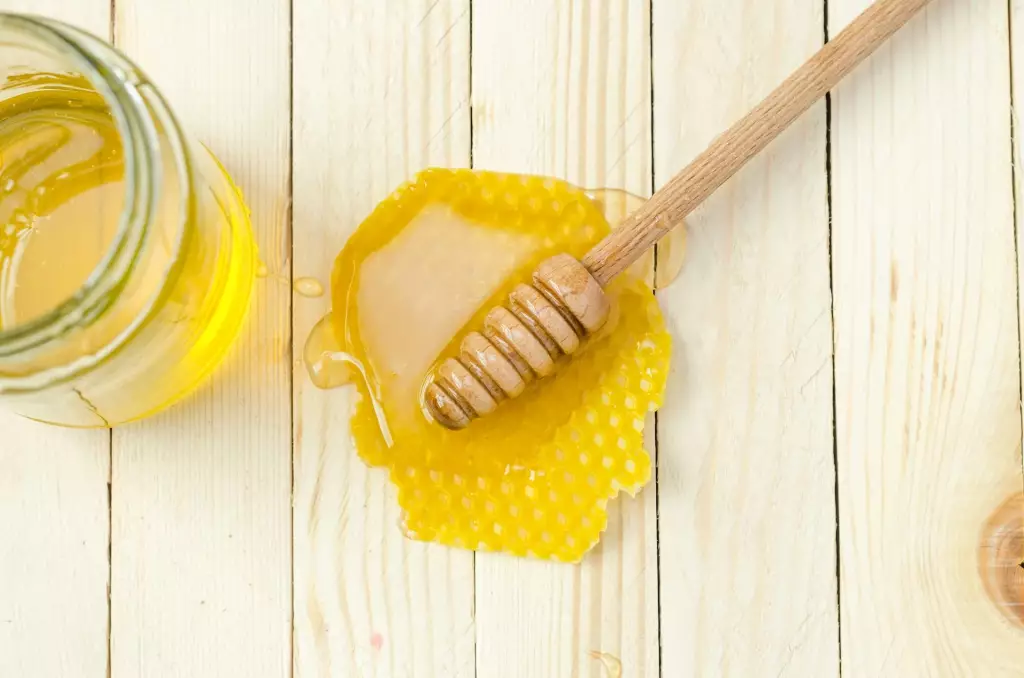
The Flowers That Produce The Darkest Honey
Foraging on buckwheat and palmetto trees produces the darkest honey. The darker-colored nectar of these plants makes honey that has a dark amber color. The honey is thicker and richer than other types of honey, but it has a mild, strong flavor.
Orange blossom and other citrus trees, Tupelo trees, wild sage, horse mint, and the tulip tree will also produce darker, stronger honey, but it will still be mild in flavor.
The Flowers That Make Light Honey
Sweet clover, clover, and alfalfa will produce a light, mild honey. Milkweed has a light color and a mild flavor. Sunflower honey has a light to extra-light amber color and a lightly herbaceous flavor with citrus notes.
Honey gets its color from the floral nectar that it contains. Lighter honeys are generally milder in flavor, whereas darker honeys are stronger.
